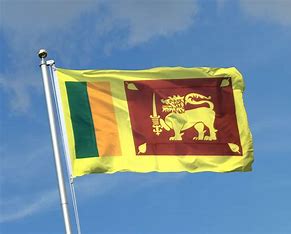
I will suggest the top 10 historical sites for tourists in Sri Lanka.
1. Sigiriya –
2. Polonnaruwa –
3. Anuradhapura –
4. Galle Fort –
5. Dambulla Cave Temple –
6. Kandy –
7. Yala National Park –
8. Horton Plains National Park –
9. Jaffna –
10. Nuwara Eliya –
1. Sigiriya Sri Lanka –
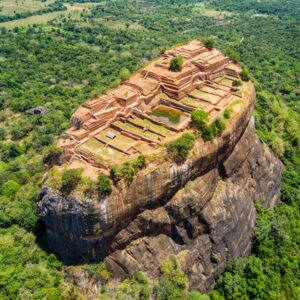
Visiting Sigiriya in Sri Lanka is an unforgettable experience for tourists, blending natural beauty, ancient history, and archaeological wonder.
Sigiriya, or “Lion Rock,” is a UNESCO World Heritage Site famous for its dramatic setting and well-preserved ruins atop a plateau.
The journey to Sigiriya is not only scenic, but it also features lush greenery and rural villages leading to this iconic landmark. Moreover, as you approach, the sight of the colossal rock formation becomes truly awe-inspiring.
The ascent to the summit involves a series of steep steps and narrow pathways, but the climb is well worth the effort.
Along the way, visitors encounter fascinating historical features. The Sigiriya Frescoes, delicate paintings of celestial maidens, adorn a sheltered rock face about halfway up the climb.
These frescoes are considered masterpieces of ancient Sri Lankan art, showcasing the refined artistic skills of the time. Another remarkable feature is the Mirror Wall, once polished so thoroughly that the king could see his reflection.
This wall is covered in ancient graffiti; consequently, it provides valuable insights into the thoughts and expressions of visitors from centuries past.
Reaching the summit, tourists are rewarded with panoramic views of the surrounding jungle and countryside.
The top of Sigiriya Rock houses the remnants of an ancient palace complex, including foundations of buildings, gardens, and pools.
The design reflects sophisticated urban planning and hydraulic engineering, highlighting the ingenuity of its creators.
Sigiriya’s history is as captivating as its views. It was developed during the reign of King Kasyapa in the 5th century AD and served as a royal citadel for over a decade.
2. Polonnaruwa Sri Lanka –
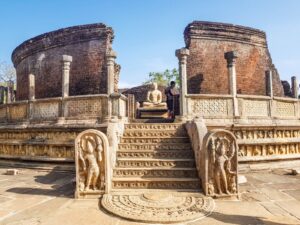
Visiting Polonnaruwa in Sri Lanka offers tourists a captivating journey through ancient history, showcasing the grandeur of a medieval capital that once thrived as the heart of Sinhalese culture and politics.
This UNESCO World Heritage Site is one of the historical sites in Sri Lanka, and is renowned for its well-preserved ruins, temples, and statues, offering a window into the island’s rich past.
The journey to Polonnaruwa is scenic, passing through verdant landscapes and serene villages.
Renting a bicycle or, alternatively, hiring a tuk-tuk is a popular way to explore the site; thus, it allows for a leisurely and immersive experience.
One of the highlights of Polonnaruwa is the Royal Palace complex, built by King Parakramabahu I in the 12th century.
The impressive ruins include the massive audience hall and the king’s residence, with intricate stone carvings that attest to the architectural brilliance of the time. Nearby, the Quadrangle is a compact area packed with stunning structures, such as the Vatadage, a circular relic house with elaborately carved guard stones, and a central stupa.
The Gal Vihara, a rock temple featuring four magnificent Buddha statues carved out of granite, is another must-see. These statues, depicting different postures of the Buddha, are considered masterpieces of Sri Lankan art and sculpture.
Polonnaruwa also boasts beautiful ancient reservoirs, such as the Parakrama Samudra, an impressive feat of engineering that highlights the advanced hydraulic systems developed by the ancient Sinhalese civilization.
A visit to the Polonnaruwa Museum not only provides valuable context, but it also features exhibits showcasing artifacts, models, and informative displays about the city’s history and significance.
3. Anuradhapura Sri Lanka –
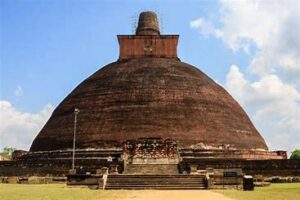
Visiting Anuradhapura in Sri Lanka offers a fascinating journey through ancient historical sites, showcasing impressive archaeological wonders and sacred locations.
Recognized as a UNESCO World Heritage Site, Anuradhapura not only offers tourists a profound glimpse into Sri Lanka’s rich history, but it also highlights the country’s Buddhist heritage.
The drive to Anuradhapura is scenic, passing through lush countryside and traditional villages. Upon arrival, visitors are greeted by the sprawling ruins of what was once a bustling metropolis and a major center of Theravada Buddhism.
The city, flourishing from the 4th century BC, is renowned for its well-preserved monuments, stupas, and monastic complexes.
One of the most iconic sites in Anuradhapura is, in fact, the Sri Maha Bodhi, which is a sacred fig tree grown from a cutting of the original Bodhi tree under which the Buddha attained enlightenment.
Pilgrims and tourists alike visit this revered site, offering prayers and soaking in the spiritual atmosphere.
Majestic stupas, such as the Ruwanwelisaya, Jetavanaramaya, and Abhayagiri Dagaba, dot the city.
These colossal brick structures, some of the largest in the ancient world, are architectural marvels that dominate the skyline. The intricate stone carvings and serene Buddha statues further enhance the spiritual ambiance.
The ancient Royal Palace complex, which includes the Brazen Palace and the Royal Baths, not only provides insights into the opulence of Anuradhapura’s kings but also highlights their sophistication.
The Kuttam Pokuna (Twin Ponds) is another remarkable site, showcasing the advanced hydraulic engineering skills of the ancient Sinhalese.
The Archaeological Museum in Anuradhapura is a treasure trove of artifacts, offering valuable insights into the city’s history and significance.
The museum’s exhibits, for instance, include statues, coins, and relics that not only illustrate the ancient inhabitants’ daily life but also shed light on their religious practices.
4. Galle Fort Sri Lanka –
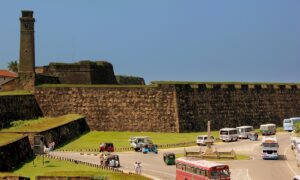
Galle Fort is one of the historical sites and is a UNESCO World Heritage Site located on the southwestern coast of Sri Lanka, is a captivating destination that seamlessly blends history, culture, and stunning coastal views.
Originally built by the Portuguese in the 16th century and later fortified by the Dutch, this well-preserved fortification offers visitors a glimpse into the island’s colonial past.
As you stroll through the fort’s cobblestone streets, you will not only encounter charming colonial architecture but also discover vibrant boutiques and cozy cafes along the way.
The fort’s walls, which stretch over 3 kilometers, provide a perfect vantage point to admire the Indian Ocean’s azure waters and the picturesque coastline.
Don’t miss the iconic lighthouse, built in 1848, which stands as a symbol of Galle’s maritime heritage.
Galle Fort is also home to several museums, including the National Maritime Museum, where you can learn about the region’s rich maritime history and diverse marine life.
The fort’s numerous churches, such as the Dutch Reformed Church and St. Mary’s Cathedral, showcase stunning architecture and offer a peaceful retreat for reflection.
For those interested in local culture, the fort hosts various art galleries and craft shops, where you can find unique souvenirs and handmade items.
The vibrant atmosphere is enhanced by the friendly locals who are eager to share their stories.
Whether you’re exploring the historical sites, enjoying a sunset walk along the ramparts, or savoring delicious Sri Lankan cuisine at a local restaurant, Galle Fort promises an unforgettable experience for every traveler.
5. Dambulla Cave Temple Sri Lanka –
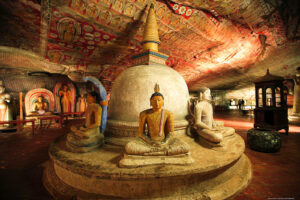
Visiting the Dambulla Cave Temple in Sri Lanka is a captivating experience that combines natural beauty, religious significance, and historical richness.
Also known as the Golden Temple of Dambulla, this UNESCO World Heritage Site is one of the historical sites and best-preserved cave temple complexes in Sri Lanka, offering tourists a fascinating glimpse into ancient Buddhist art and culture.
The scenic journey to Dambulla features lush landscapes and picturesque villages, while the 160-meter climb to the caves rewards visitors with panoramic views.
The serene ambiance, along with the occasional sighting of playful monkeys, significantly enhances the ascent, which, despite being moderately challenging, becomes a more enjoyable experience.
The Dambulla Cave Temple complex comprises five main caves, each adorned with intricate murals and a myriad of Buddha statues.
These 1st-century BC paintings and sculptures are masterpieces of Buddhist art, depicting scenes from the Buddha’s life, deities, and historical figures.
The rich colors and detailed craftsmanship of the murals are awe-inspiring, reflecting the devotion and skill of the ancient artists.
The largest cave, known as the Maharaja Viharaya, not only houses an impressive 14-meter-long reclining Buddha statue but also features numerous other statues and murals, thereby enriching the overall experience.
The serene and meditative atmosphere within the caves offers a spiritual experience, inviting visitors to reflect and find peace.
Adjacent to the caves, the Golden Temple’s museum provides further insights into the historical and cultural significance of the site. Informative exhibits and artifacts enhance the visitor’s understanding of the temple’s role in Sri Lankan history.
Nearby attractions, such as the ancient city of Sigiriya and the bustling town of Kandy, make Dambulla an excellent stop on a broader cultural tour of Sri Lanka.
6. Kandy Sri Lanka-
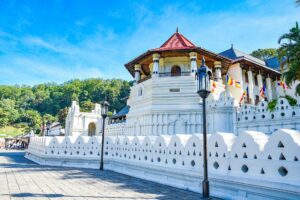
Kandy, located in the heart of Sri Lanka, is a mesmerizing destination that offers a blend of rich history, cultural heritage, and natural beauty, making it a must-visit for tourists.
As the last capital of the ancient kings of Sri Lanka, Kandy is steeped in history and tradition, evident in its numerous temples, palaces, and sacred sites.
One of the best historical sites and most iconic attractions in Kandy is the Temple of the Tooth Relic Sri Lanka, which houses a sacred tooth relic of Lord Buddha and is a significant pilgrimage site for Buddhists.
Visitors can witness traditional rituals and ceremonies at the temple, immersing themselves in the spiritual ambiance of the place.
Nature lovers will delight in the lush greenery surrounding Kandy, as attractions like the Royal Botanical Gardens in Peradeniya provide a peaceful retreat amidst exotic flora and fauna.
The serene Kandy Lake, located in the heart of the city, provides a picturesque setting for leisurely strolls and boat rides.
For those interested in cultural experiences, the Kandy Cultural Show showcases traditional dance performances, music, and drumming, providing a glimpse into Sri Lanka’s vibrant heritage.
Additionally, exploring the bustling streets of Kandy’s markets offers a chance to sample local delicacies and purchase unique handicrafts as souvenirs.
Overall, a visit to Kandy promises a diverse and enriching experience for tourists, combining history, spirituality, nature, and culture in a harmonious blend that captivates the senses and leaves a lasting impression on all who venture to this enchanting city.
7. Yala National Park Sri Lanka –
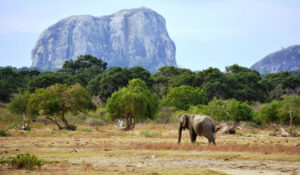
Yala National Park, situated in the southeastern part of Sri Lanka, is a haven for wildlife enthusiasts and nature lovers alike.
Spanning over 97,880 hectares, Yala is not only the second-largest national park in Sri Lanka, but it is also renowned for its diverse ecosystems and abundant wildlife.
One of the main attractions of Yala National Park is its population of elusive leopards, making it one of the best places in the world to spot these majestic big cats in their natural habitat.
Visitors can embark on thrilling safari adventures through the park’s rugged terrain, guided by experienced naturalists who help navigate the vast wilderness and spot a variety of wildlife, including elephants, sloth bears, crocodiles, and a myriad of bird species.
The park’s varied landscapes, ranging from dense forests to open grasslands and coastal lagoons, provide a scenic backdrop for wildlife sightings and offer a unique opportunity to witness the beauty of Sri Lanka’s natural heritage up close.
In addition to wildlife safaris, visitors to Yala National Park can also explore ancient archaeological sites such as Sithulpawwa Rock Temple, which dates back to the 2nd century BC, adding a cultural dimension to their experience.
Overall, a visit to Yala National Park promises an unforgettable adventure filled with wildlife encounters, breathtaking landscapes, and a deep appreciation for the natural wonders of Sri Lanka.
It is a must-visit destination for those seeking an immersive and enriching wildlife experience in a pristine and unspoiled environment.
8. Horton Plains National Park Sri Lanka –
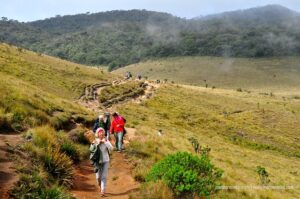
Horton Plains National Park, located in the central highlands of Sri Lanka, is a pristine and breathtaking destination that offers a unique experience for tourists seeking adventure and natural beauty.
The park is renowned for its stunning landscapes, diverse flora and fauna, and iconic attractions such as World’s End and Baker’s Falls.
One of the main highlights of Horton Plains National Park is the World’s End, a sheer cliff with a drop of over 800 meters that offers panoramic views of the surrounding valleys and tea plantations.
Visitors can embark on a scenic trek through the park to reach this vantage point and witness the awe-inspiring sight of the mist-covered plains stretching out below.
Baker’s Falls, another popular attraction in the park, is a picturesque waterfall cascading down a rocky cliff, surrounded by lush greenery and vibrant birdlife.
The tranquil ambiance of this natural wonder provides a peaceful retreat for visitors to relax and appreciate the beauty of the surroundings.
Horton Plains National Park is also home to a variety of wildlife, including sambar deer, purple-faced langurs, and a wide range of bird species.
Nature enthusiasts can embark on guided safaris or hiking tours to explore the park’s diverse ecosystems and observe its inhabitants in their natural habitat.
Overall, a visit to Horton Plains National Park promises an unforgettable experience for tourists, offering a perfect blend of adventure, natural beauty, and wildlife encounters that showcase the unique charm of Sri Lanka’s highlands.
9. Jaffna Sri Lanka –
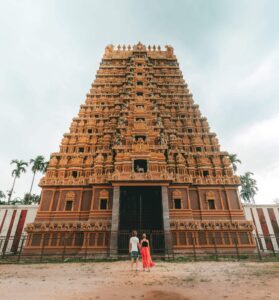
Jaffna, located in the northern part of Sri Lanka, is a captivating destination that offers a unique blend of history, culture, and natural beauty, making it a compelling choice for tourists seeking an off-the-beaten-path experience.
Steeped in a rich heritage shaped by centuries of Tamil influence, Jaffna boasts a distinct identity that sets it apart from other regions in the country.
One of the oldest historical sites and most prominent attractions in Jaffna Sri Lanka, is the historic Jaffna Fort, a 17th-century Dutch fortification that stands as a testament to the region’s colonial past.
Visitors can explore the ramparts, bastions, and underground tunnels of the fort while enjoying panoramic views of the surrounding landscape.
Jaffna is also home to several iconic Hindu temples, such as the Nallur Kandaswamy Kovil, known for its vibrant architecture and religious significance.
The temple’s annual festival, featuring colorful processions and rituals, attracts devotees and tourists alike, offering a glimpse into the local customs and traditions.
Nature enthusiasts will appreciate the pristine beaches of Jaffna, including Casuarina Beach and Chundikulam National Park, where they can relax on sandy shores, go birdwatching, or embark on boat tours to explore the diverse ecosystem of the region.
Exploring Jaffna’s bustling markets, such as the Jaffna Fish Market and Jaffna Vegetable Market, provides an opportunity to sample authentic Tamil cuisine and purchase local handicrafts, spices, and textiles.
Overall, a visit to Jaffna promises a rewarding and immersive experience for tourists looking to discover the hidden gems of Sri Lanka’s northern region.
10. Nuwara EliyaSri Lanka –
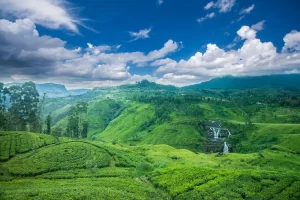
Nuwara Eliya, often referred to as “Little England,” is a charming hill station nestled in the central highlands of Sri Lanka, offering tourists a refreshing escape from the tropical heat and a glimpse into the country’s colonial past.
Known for its cool climate, lush tea plantations, and picturesque landscapes, Nuwara Eliya is a popular destination for nature lovers and adventure seekers alike.
Visitors to Nuwara Eliya can embark on scenic train rides through the rolling hills, passing by verdant tea estates and cascading waterfalls, providing a truly immersive experience in the region’s natural beauty.
The iconic Horton Plains National Park, located nearby, offers breathtaking views of World’s End, a sheer cliff that plunges into the valley below, as well as the chance to spot unique wildlife and endemic flora.
The town itself exudes a quaint charm with its colonial architecture, well-manicured gardens, and horse racing events that harken back to its British colonial heritage.
Tourists can explore attractions such as the picturesque Lake Gregory, Victoria Park, and the historic Seetha Amman Temple, adding cultural and spiritual dimensions to their visit.
Nuwara Eliya is also renowned for its high-quality Ceylon tea, and visitors can tour tea factories to learn about the tea-making process and sample a variety of blends.
Additionally, outdoor enthusiasts can partake in activities such as hiking, birdwatching, and golfing amidst the cool, crisp air of the hill country.
In conclusion, a visit to Nuwara Eliya promises a serene and rejuvenating experience for tourists, offering a perfect blend of natural beauty, cultural heritage, and outdoor adventures in a setting that feels like a step back in time.






